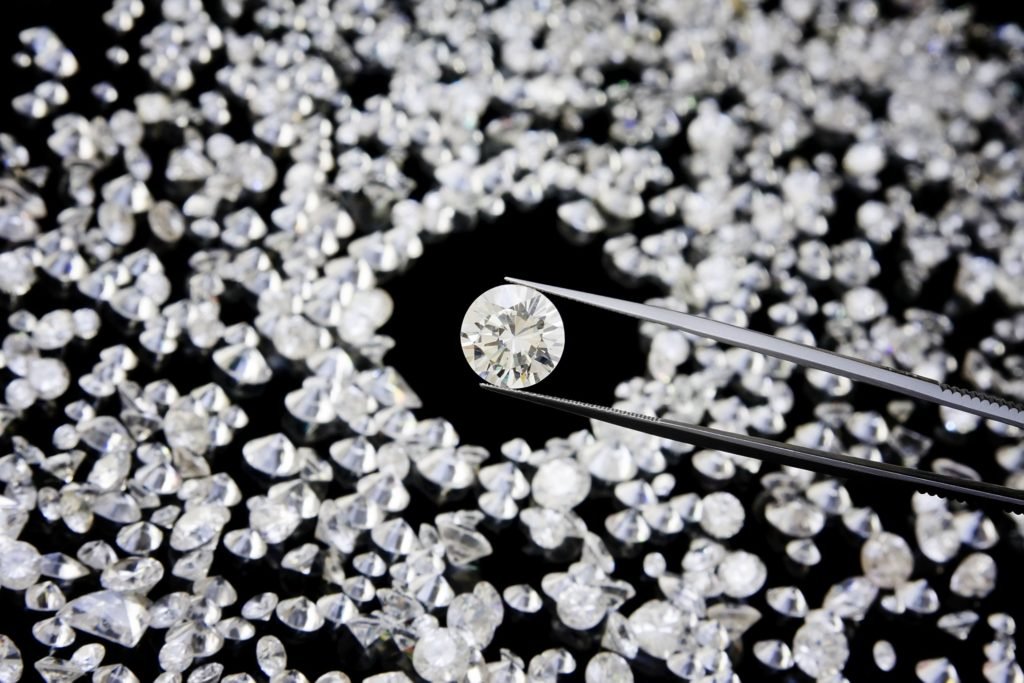
Unveiling the Brilliance: Your Ultimate Guide to Lab Grown Diamonds
Lab-grown diamonds are revolutionizing the jewelry industry, offering consumers an ethical, sustainable, and cost-effective alternative to mined diamonds. In this comprehensive guide, we’ll delve into everything you need to know about lab-grown diamonds, from their creation process to their environmental impact, and why they’re becoming increasingly popular among consumers.
Guides Lab Grown Diamonds
Lab-grown diamonds, also known as synthetic or cultured diamonds, are created in controlled laboratory environments rather than being mined from the earth. While the concept of lab-grown diamonds may seem relatively new, scientists have been experimenting with diamond synthesis since the 1950s. Today, advancements in technology have made it possible to produce high-quality diamonds that are virtually indistinguishable from mined diamonds.
One of the primary advantages of lab-grown diamonds is their ethical and environmental benefits. Unlike mined diamonds, which often have a controversial history involving labor practices and environmental damage, lab-grown diamonds are produced without any harm to communities or ecosystems.
How Lab-Grown Diamonds are Made
Lab-grown diamonds are typically created using two main methods: Chemical Vapor Deposition (CVD) and High Pressure High Temperature (HPHT). In the CVD process, a diamond seed is placed in a vacuum chamber where carbon-rich gases are heated to form layers of diamond on the seed. Conversely, the HPHT method mimics the natural conditions under which diamonds are formed deep within the earth, using high pressure and temperature to crystallize carbon into diamond.
Quality and Characteristics
When it comes to quality, lab grown diamonds are held to the same standards as mined diamonds, with factors such as clarity, color, cut, and carat weight (often referred to as the 4Cs) determining their value. Additionally, lab-grown diamonds are inherently conflict-free, as they are not associated with any unethical mining practices or armed conflicts.
Despite common misconceptions, lab-grown diamonds exhibit the same brilliance, fire, and durability as mined diamonds. In fact, many lab-grown diamonds undergo rigorous testing and certification to ensure their authenticity and quality.
Cost Comparison with Mined Diamonds
One of the most significant advantages of lab-grown diamonds is their affordability compared to mined diamonds. While the price of mined diamonds is influenced by factors such as rarity and market demand, lab-grown diamonds are produced in a controlled environment, allowing for more consistent pricing and accessibility.
Environmental Impact
In addition to being more affordable and ethical, lab-grown diamonds also have a lower environmental impact compared to mined diamonds. The mining process for natural diamonds often involves extensive land disruption, water usage, and energy consumption, leading to carbon emissions and habitat destruction. In contrast, lab-grown diamonds require significantly fewer resources and produce minimal waste, making them a more sustainable choice for environmentally conscious consumers.
Popularity and Acceptance
Over the past decade, guides lab grown diamonds have gained traction in the jewelry market, with an increasing number of consumers opting for these sustainable alternatives. In response to growing demand, major jewelry retailers and designers have begun incorporating lab-grown diamonds into their collections, further legitimizing their place in the industry.
Common Misconceptions Debunked
Despite their many benefits, lab-grown diamonds are often subject to misconceptions and misinformation. Some consumers believe that lab-grown diamonds are of inferior quality or lack value compared to mined diamonds. However, numerous studies and independent assessments have debunked these myths, confirming that lab-grown diamonds are just as valuable and durable as their natural counterparts.
Certification and Authentication
To ensure transparency and authenticity, lab-grown diamonds are typically certified by reputable grading institutions such as the Gemological Institute of America (GIA) or the International Gemological Institute (IGI). These certifications provide consumers with peace of mind knowing that their diamond has been evaluated and graded according to industry standards.
Choosing the Right Lab-Grown Diamond
When shopping for a lab-grown diamond, there are several factors to consider, including the diamond’s quality, size, and certification. It’s essential to research trusted brands and retailers that specialize in lab-grown diamonds and offer warranties or guarantees on their products.
Maintenance and Care
Like mined diamonds, lab-grown diamonds require regular maintenance to keep them looking their best. To clean your lab-grown diamond, simply soak it in warm, soapy water and gently scrub with a soft brush. Avoid harsh chemicals or abrasive cleaners, as these can damage the diamond’s surface.
Fashion and Trends
Lab-grown diamonds are not only a sustainable choice but also a fashionable one. With increasing awareness of ethical and environmental issues, many consumers are opting for lab-grown diamond jewelry as a statement of their values. Celebrities and influencers are also embracing lab-grown diamonds, further driving their popularity and acceptance in the fashion world.
Investment Potential
While some may view lab-grown diamonds primarily as fashion accessories, they also hold investment potential. As the demand for sustainable and ethically sourced diamonds continues to rise, lab-grown diamonds may appreciate in value over time, making them a smart investment for savvy investors.
Cultural and Social Impact
The rise of lab-grown diamonds is not only reshaping the jewelry industry but also challenging traditional notions of luxury and status. As consumers become more conscious of the social and environmental impact of their purchases, lab-grown diamonds are emerging as symbols of responsible consumption and ethical values.
Future Outlook
As technology continues to advance, the future of lab-grown diamonds looks bright. Innovations in diamond synthesis techniques are making it possible to produce larger, higher-quality diamonds at lower costs, further disrupting the traditional diamond market. With increasing consumer awareness and demand for sustainable alternatives, lab-grown diamonds are poised to become the norm rather than the exception in the jewelry industry.













